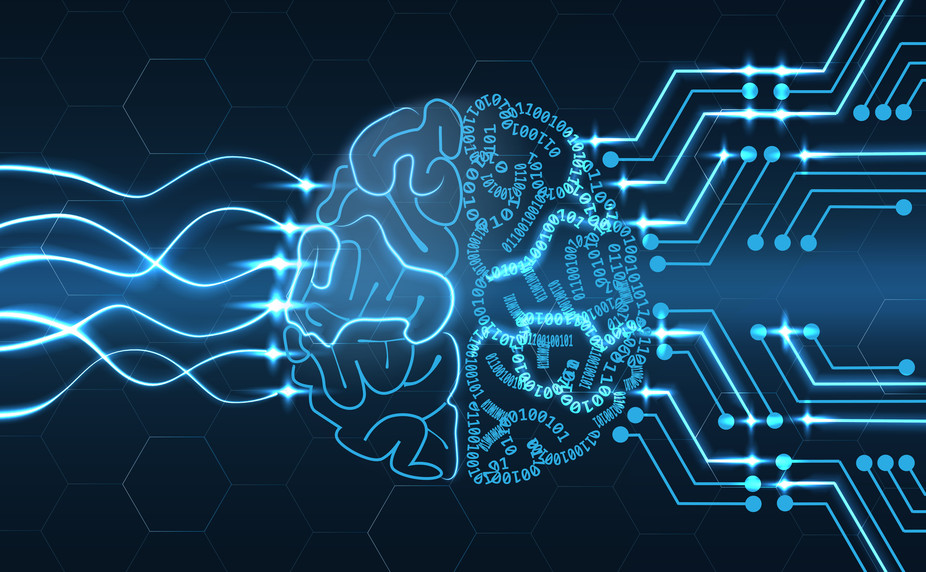 Many of us are familiar with depictions of artificial intelligence (AI) in movies, from humanity’s machine overlords in The Matrix to rebelling machines in i, Robot. However, we’re now seeing AI appearing in the real world. In our day to day lives AI is becoming prevalent. Applications such as Siri and Amazon’s Alexa are automating our homes. Our viewing habits influence both the development of new content and recommended content on Netflix. Both Pandora and Netflix leverage predictive technology based on customer’s listening or viewing patterns. Both companies analyzes billions of records to suggest content that you might like based on your previous reactions and choices.
Many of us are familiar with depictions of artificial intelligence (AI) in movies, from humanity’s machine overlords in The Matrix to rebelling machines in i, Robot. However, we’re now seeing AI appearing in the real world. In our day to day lives AI is becoming prevalent. Applications such as Siri and Amazon’s Alexa are automating our homes. Our viewing habits influence both the development of new content and recommended content on Netflix. Both Pandora and Netflix leverage predictive technology based on customer’s listening or viewing patterns. Both companies analyzes billions of records to suggest content that you might like based on your previous reactions and choices.
As AI expands its development and capabilities, many industries, including Information Technology, have begun to use AI in their daily workflow. A true artificially-intelligent system is one that can learn on its own and can improve on past iterations, becoming smarter and significantly more aware. This allows an AI system to enhance its capabilities and its knowledge. Below, we’ve outlined some of the potential areas where AI is integrating into the IT field.
Data Analysis
Computers are capable of mining and analyzing vast volumes of data at speeds that would be impossible for human beings. They can recognize trends while gathering data to help us make more informed decisions and boost our productivity. Trend recognition (Think Pandora or Netflix) could benefit companies in any number of ways, including optimizing business structure based on sales analysis or spending trends.
With AI, we’ll also see vast improvements in complex problem-solving. Since computers can hold all the data needed to address a problem, they can quickly recognize relationships in the data and extrapolate new conclusions. By comparison, reaching these same conclusions would take humans weeks, months, years, or even decades longer
Like trend analysis and complex problem solving, risk analysis is another area that can be improved by intelligent computing. Computers can predict conditions that might impact areas of the business by analyzing trends and past sales data. The ability for AI to process millions of risk scenarios will make mapping business risks and planning for worst-case scenarios more exact.
Machine Learning
By definition, AI machines build on their knowledge at an exponential rate and can form decisions based on data acquired. If there is insufficient data to return an intelligent decision, they can collect new data to help them better understand the problem. As long as machines are given parameters that allow them to know when they have arrived at the correct decision, there is no limit to what they might be able to learn.
An innovative new start up called Deep Instinct is using the capture and processing of vast amounts of data in real time, to understand the composition of thousands of strains of malware. Instead of looking for the signature of a file, Deep Instinct looks at the binary structure of a file then utilizes its neural network to detect intrusive attacks prior to execution.
Robotic Process Automation (RPA)
Robotic process automation (RPA) is the application of technology that allows an end user to configure computer software or a “robot” to capture and interpret existing applications for processing a transaction, manipulating data, initiate a response while communicating with other digital systems.
A leader in the RPA field is UiPath. Their RPA intelligence manipulates existing software, including customer relationship management (CRM) tools and enterprise resource planning (ERP) apps, to emulate a specific task typically carried out by a human, be it in HR, accounting, or finance. UiPath works at the user interface (UI) level rather than beneath the UI. The software robots are essentially trained to “look” at the interface, interpret what’s going on, and interact with an application in a fashion similar to the way a human would.
Artificial Intelligence is being touted as the next big thing that will completely revolutionize our lives and the way we do business. In the IT world, where computers are already an integral part of the work, the possibilities could truly be endless. Since IT professionals are already thinking of new ways to automate processes and use computers to do more, there seems to be no end to the number of advancements possible.
Interested in learning more about how Sanity Solutions is incorporating cutting-edge technology in their data management solutions? Contact us today!
photo courtesy of robohub.org

